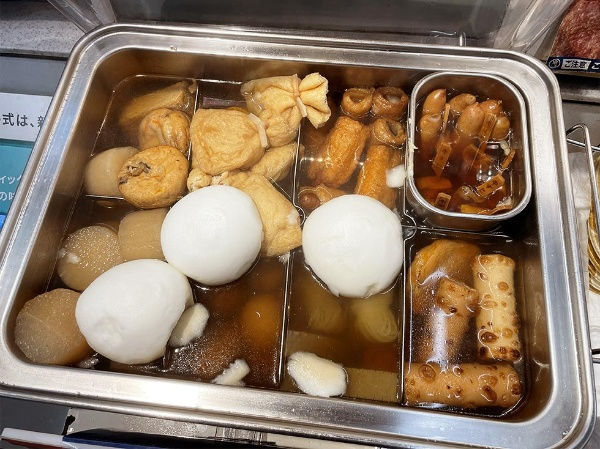Japan’s Gateway to Autumn: The Autumn Equinox (秋分の日)
- Narelle Katsumoto

- 2 日前
- 読了時間: 3分

Every September, Japan welcomes one of the most meaningful seasonal markers of the year: the Autumn Equinox (Shūbun no Hi, 秋分の日). Usually falling on September 22 or 23, this holiday officially ushers in autumn. On this day, the sun rises directly in the east and sets directly in the west, with day and night balanced in perfect harmony.
But Shūbun no Hi is more than an astronomical event—it’s a time of remembrance, reflection, and seasonal delights.
What Happens on the Autumn Equinox?
The equinox occurs when the sun crosses the equator from the Northern Hemisphere into the Southern Hemisphere. In Japan, this transition is marked with a public holiday where families pause their busy routines.
The equinox also overlaps with Higan (お彼岸), a Buddhist period observed around both spring and autumn. While Higan happens twice a year, it carries a stronger sense of reverence in autumn. Families often visit ancestral graves, clean them, and offer incense or flowers. Traditionally, the end of Higan also signals a shift in the weather—cooler days in autumn or warmer days in spring.
A Holiday with Ancient Roots
The Autumn Equinox has been observed in Japan for centuries. Originally, it was celebrated as Shūki Kōreisai, a religious event blending Shinto and Buddhist traditions. People visited temples, shrines, and family graves to honor both ancestors and emperors.
During the Meiji period (1868–1912), the day became an official national holiday. At first, it was more religious in tone, but after World War II, Japan’s new constitution separated religion from state matters. The day was then rebranded as a secular holiday while keeping its focus on respect for nature and remembrance of loved ones.
Today, most people enjoy it as a peaceful holiday—sometimes part of an extended break called Silver Week, when it aligns with Respect for the Aged Day.
Flowers of the Season
Autumn in Japan comes alive with blossoms that hold deep cultural meaning:

Higanbana (Red Spider Lilies): These vivid red flowers bloom right around the equinox, often near temples, rice fields, and graveyards. Their timing is tied to Higan rituals, representing the ‘cycle of life and death’ and showing how life is both beautiful and fragile. Interestingly, their bulbs are poisonous, which is why they were often planted to keep pests away from crops.

Kinmokusei (Fragrant Olive or Osmanthus): This small orange flower fills neighborhoods with a sweet scent that signals autumn’s arrival. The fragrance, often compared to peaches and apricots, lingers in the air for only a short time. Beyond gardens, its essence is now used in perfumes, hand creams, and teas, adding another layer of autumn charm.
Flavors of Autumn
Japan’s food culture thrives on the seasons, and autumn is one of the tastiest times of the year. Some highlights include:

Shinmai (new rice): The first rice harvest of the year is softer and sweeter than regular rice, and can be savored plain or with autumn additions like chestnuts or matsutale mushrooms.

Matsutake mushrooms: Earthy and aromatic, these mushrooms are a prized autumn delicacy. They grow only at the roots of pine trees and are enjoyed grilled, steamed with rice, or in soups. Since being listed as a vulnerable species in 2020, their rarity has made them more costly each year.

Oden: A comforting hot pot with ingredients like daikon radish, fish cakes, boiled eggs, and konnyaku simmered in a light soy-based broth. Found everywhere from convenience stores to izakaya, it’s the perfect warm meal for chilly nights.

Kaki (persimmons): Bright orange and sweet, these fruits are eaten raw or made into jams and desserts.

Kuri (chestnuts): Enjoyed roasted as snacks or cooked into rice (kurigohan), chestnuts are also turned into sweets like kuri kinton.

Yakiimo (roasted sweet potatoes): Perhaps the most nostalgic autumn snack—sold from food stalls, trucks, or convenience stores. Warm, sweet, and filling, they’re a seasonal favorite.

Kabocha (Japanese pumpkin): With its nutty sweetness, this green-skinned squash is enjoyed in tempura, braised dishes, or boiled.

Sanma (Pacific saury): This silver-skinned fish is at its peak in autumn. Grilled with just salt, sanma no shioyaki is a beloved seasonal dish, rich in flavor and nutrition.
Stepping Into the Heart of Autumn
The Autumn Equinox in Japan is more than a date on the calendar—it’s a gateway into the season of balance and reflection. It’s a time for remembering ancestors, savoring seasonal scents and flavors, and embracing the harmony between light and dark. As the seasons shift, why not experience Japan’s gateway to autumn for yourself this year?
Picture Sources:
My photo
https://kodawari-times.net/wp-content/uploads/2022/10/higanbana2.jpg
https://deodor.net/wp-content/uploads/2023/09/kinmokusei1.jpg
https://www.trial-net.co.jp/mag/wp-content/uploads/2021/11/pixta_83867483_M-min.jpg.jpg
https://www.zojirushi.co.jp/kakushiaji/2024/09/yakiimo_mv.jpg
https://d2fkeu104nzh1m.cloudfront.net/assets/official/11038/11038_main.jpg
Sources:









コメント